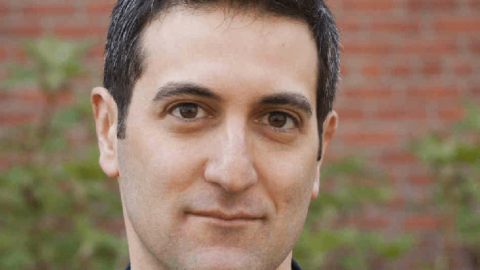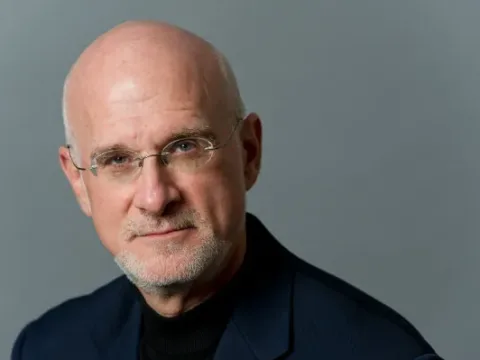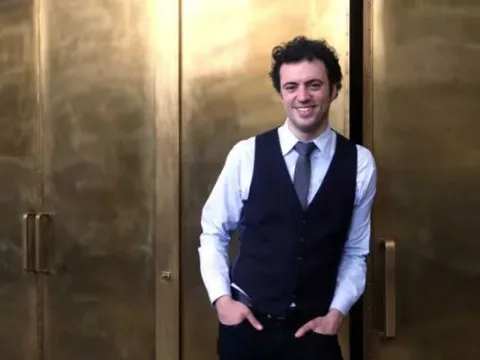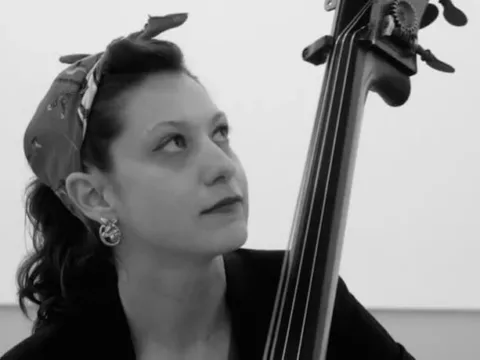This is the second post of Technology Editor Dana Wen’s two-part coverage of the seventh annual Music & Brain Symposium, held at Stanford University on April 12 – 13, 2013. Archived recordings of the symposium proceedings can be viewed online here.
Tucked away on a hilly corner of Stanford University’s sprawling campus, the Center for Computer Research in Music and Acoustics (CCRMA) occupies a Spanish Gothic villa packed full of circuit boards, percussion instruments, and all manner of musical and electronic toys. The building, known as The Knoll, is home to a quirky group of researchers and musicians devoted to exploring the science of sound. CCRMA’s strong interdisciplinary focus makes it the perfect setting for the annual Music & Brain Symposium, founded by Stanford professor and composer Jonathan Berger. The conference draws an international roster of scholars representing many fields of study, including psychology, neuroscience, philosophy, and anthropology. On April 13, the seventh Music & Brain Symposium convened at The Knoll for a day of presentations centered around this year’s theme, auditory hallucinations. (Previous themes include musical emotion, improvisation, and memory.) The topic hits close to home for Berger, who developed an interest in “inner voices” when his late mother experienced musical hallucinations. This fascination led to the composition of two operas, Theotokia and The War Reporter, which premiered in tandem with the symposium.

With a full schedule of nine presentations packed into a single day, the symposium covered much ground. Beginning with an exploration of how the brain perceives sound and music, the talks branched out into the world of auditory hallucinations, delving into the history, philosophy, science, and cultural perceptions of these phenomena. Schizophrenia and post-traumatic stress disorder (PTSD) received much attention and discussion, particularly because of the strong links between these illnesses and auditory hallucinations. The day culminated with a presentation by Pultizer Prize-winning photojournalist Paul Watson, whose struggles with PTSD-related hallucinations were documented by Berger in The War Reporter.
A leading researcher in the psychology of sound, UC San Diego professor Diana Deutsch’s studies of sonic “illusions” explore the boundaries between sound, speech, and song. Deutsch demonstrated that the brain attempts to make sense of repeated patterns of sound by seeking out familiar words or melodies. She played an audio clip of two identical tones that sounded in a repeating rhythmic pattern. After several seconds of listening to the clip, words and short phrases began to emerge from the noise. Deutsch also discovered that repetition can turn a spoken sentence into a melody through “speech to song illusion“. After listening to several repetitions of an audio clip of Deutsch reading a sentence, she seems to burst into song during a particular phrase.
Deutsch also shared findings from her research on musical hallucinations. After numerous interviews with people who have been affected by these phenomena, she began to notice the emergence of patterns and trends. Musical hallucinations often take the form of familiar songs — particularly religious or patriotic tunes — heard incessantly at a loud volume. Among Americans, “Glory Glory Hallelujah” is one of the most commonly heard hallucinatory songs. Some musical hallucinations contain characteristics that defy reality, such as a singing voice that goes on and on without taking a breath. Unfortunately, most of Deutsch’s subjects felt annoyed or even tormented by their hallucinations, particularly because of their loud volume. Many found that hallucinatory music could only be eliminated by listening to the radio at full volume.
In popular culture, auditory hallucinations are frequently associated with schizophrenia. It’s estimated that over 70% of people with schizophrenia experience hallucinatory sounds. UC San Francisco professor Judith Ford studies the schizophrenic brain, using fMRI technology to peer into the minds of people who suffer from this mental illness. Ford’s research examines how different areas of the brain interact and how these interactions might cause auditory hallucinations to arise. For example, it’s known that the medial pre-frontal cortex is active when the mind is wandering, while a part of the brain called Broca’s area is a center for verbal thought and speech. Patients with schizophrenia demonstrate a higher degree of interactivity between these two cranial regions, a possible reason for the frequency of verbal hallucinations among this population.
College of New Rochelle professor Daniel Smith explored the history of hearing voices, interspersing historical facts with personal anecdotes about his father, who kept his hallucinations secret from his family for 25 years. Modern Western culture views “inner voices” as an indication of illness and insanity. Starting with the ancient hallucinatory voices of Socrates, Smith traced the path of auditory hallucinations through the centuries in an attempt to explain the current negative views towards these phenomena. In the early Christian church, “inner voices” were often glorified as a form of communication with God. It wasn’t until the late 19th century that auditory hallucinations began to acquire a bad rap through their association with schizophrenia.
Photojournalist Paul Watson opened his talk with a simple, yet powerful statement: “I don’t believe in ghosts… but I do believe in something that I call a ghost.” In 1993, Watson traveled to Somalia to document the American intervention in that country’s bloody civil war. During the Battle of Mogadishu, he encountered a mob dragging the body of an American soldier, Staff Sergeant William Cleveland, through the streets of the city. Right before snapping a photograph, he heard Cleveland’s voice say, “If you do this, I will own you forever.” Watson took the picture anyway. His photograph was published by news agencies around the world and earned him a Pulitzer Prize. Ever since that fateful day in Mogadishu, Watson has been tormented by Cleveland’s ghost. He spoke of his struggles to escape these hallucinations, including his efforts to reach out to Cleveland’s family.
For those who are curious about the inner workings of music, the Music & Brain Symposium is a geeky paradise that offers a kaleidoscope of interdisciplinary exploration. This year’s intimate conference provided ample opportunities for conversation with the presenters, who mingled with the audience during the brief breaks. Despite the diversity of disciplines represented, both the presenters and the sold-out crowd were eager to share their knowledge and learn about the work of others, creating an atmosphere of curiosity and excitement.
–
Dana Wen (I CARE IF YOU LISTEN’s Technology Editor) is a Seattle-based pianist and software engineer who writes about music, technology, and everything in between. Follow her on Twitter @wenguin.
























